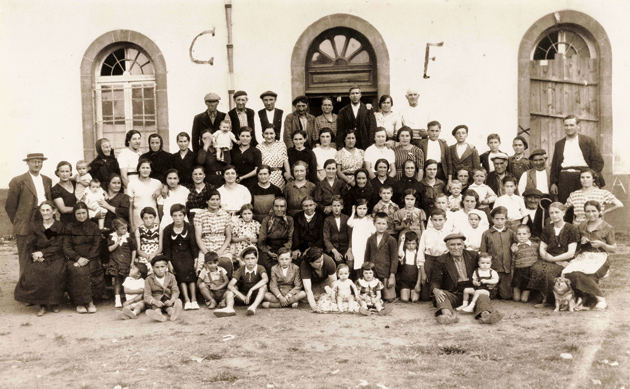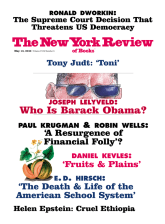On St. John’s Eve, June 23, each year in the village of Isil, in the province of Lleida, in the area known as the Pallars high in the Catalan Pyrenees, the same ritual is enacted, with roots deep in the rich earth of European rituals, a core aspect of which is to light a fire to mark the longest day of the year and ward off evil spirits. In Isil, what happens begins slowly. Once it is fully dark, from the small square in front of the church you can look up and see glimmers of burning wood in the forested hill above as the men of the village carry down logs or long tree trunks that are already burning. You can watch this strange slow procession corkscrew its way down the hill, the trunks beginning to burn brighter. The feeling that this ritual has been going on since time began deepens as you realize that no one around you believes that any of the men carrying the logs is in any danger. They know, from time immemorial, how to choose the wood, how much of each trunk to set alight, and how many men are needed to carry it down and at what pace.
It is easy to feel in these villages so close to the French border that life, with all its traditions and rituals, has the same rhythm as the seasons. Most people who live in these villages were born in them, as were their parents, and it is easy to see that the light from the big bonfire on which all the trunks are placed is also the light of regeneration; it is where the young men and women from this village and the other small villages around can meet and stay up late and dance with each other under the tender eye of the older generation.
It is easy to feel that this is an old, untouched, traditional Europe, and that the proximity to France and even the border itself that runs between France and Spain through these mountains belong to the tradition in the same ways as the rituals of St. John’s Eve in Isil do, or the idea of birth and marriage and death in these villages. It is easy to see the border in this undisturbed world as something that belongs to nature as much as to culture, that is as fully accepted and understood as night and day, something not made by history, but made by more elemental forces that have always been in place, or made indeed by God.
But then there is a photograph. And if that photograph had come to us uncaptioned it could be any group of villagers, all the generations, gathered in front of a municipal building sometime in the first half of the twentieth century. The fact that they all look so solemn need not matter. In those years in formal group photographs people saw no reason to smile. They understood the camera as a serious instrument of record. But the caption gives us the date and the place and the origin of the people. It is July 1938, and it is Clermont-Ferrand on the French side of the border, and the people, around eighty of them ranging from the very old to the very young, are from the villages of Isil, Son, and Alós d’Isil, about four kilometers from Isil. At first glance, they could be the entire population of the village—until you notice the presence of very few men aged between eighteen and fifty.
Recently, a historian, working with this photograph, has been able to identify most of the people in it, and has been able to interview some of them who are still alive, and has thus been able to piece together what happened in those months of 1938 to the quiet traditional life in a village in Spain close to the French border that caused most of its population to flee to France using mountain paths.
Such historical investigation has only been possible in the past few years, in a time when the silent pact made in 1975 on the death of Franco between both sides not to reopen old wounds, or put anyone on trial, or have a truth and reconciliation commission, no longer seems necessary or useful. The silence had done its work, had allowed a democratic society to emerge from the shadows. In the past few years, however, these very shadows and that very silence have come to seem like poison from the past. Not only are the murdered dead of the civil war being dug up and identified from communal graves all over Spain, but in the border area, in the Pyrenees that belong to both France and Spain, the paths used in these terrible years between 1936 and 1945 are being reopened in memory of those who were forced to use them.
Advertisement
And in all the villages on the Spanish, or Catalan, side of the border last summer there were lectures and exhibitions, with titles like “The Path of Freedom,” “The Pallares Exile in France,” “The Catalan Exile of 1939.” The exhibitions included photographs of the landscape as it is now and as it was then, actual diaries of those who fled across the border, and mementoes and objects from that time. On September 11—which is not only the anniversary of the attacks on the Twin Towers and the Pentagon in 2001, and the death of Salvador Allende in Chile in 1973, but also Catalonia’s national day—in a village close to Isil called Valencia d’Àneu there was a public act of homage to those from the village who were shot by Franco’s troops in 1938.
All of this is part of a new politics in Spain, the politics of memory. At the end of September there was a week-long course for tourist guides on these mountain paths in the Pallars, which have been cleared and signposted for tourists and visitors, as walkways through a beautiful mountain landscape and also walkways into the past, a past that was hidden for so long, first by a dictatorship and then by a fledgling democracy. It now has become a subject for serious investigation and a small tourist industry.
Last August I accompanied a group of locals to a site above the small church at Biuse close to the village of Llavorsi in the Pallars where a battle in the Civil War had taken place. What was notable was the difference between local men in their seventies and eighties, whose knowledge came from what they had heard over the years, and the trained young historians, who were the first to consult all the relevant documents. It was a polite clash not only between generations, but between different ways of establishing and maintaining a connection to Spain’s dark past. Despite these differences between knowledge from oral and archival sources, what was remarkable was the agreed interest among the local population in establishing what had happened. They wanted to visit the sites of the Civil War not to reopen old wounds, however, but, after years of silence, to insist that what happened not be forgotten.
It might seem then that all is settled again, that the events of seventy years ago—when people fleeing from Hitler used this border to get into Spain from France and thence to America, and when large sections of the population of villages that had been loyal to the Republic and many other Spanish refugees used this border to get out of Spain and into France—are now distant and part of history. But nothing is as simple as that. The paths were also used by priests who needed to flee for their lives from Republican Spain in 1936 and 1937. The same mountain guides, working for money, led the priests to safety as they later did those fleeing both Hitler and Franco. Any digging up of the past has to deal with the fact that some of the more affluent refugees coming from France, many of them Jewish, were robbed on the Spanish side of the border. The paths were also used between 1944 and 1946 by the maquis, who believed that if they could destabilize Franco’s regime by acts of terrorism, then the Allied forces would see fit to follow their example, as the war came to an end, and free Spain for democracy.
No border in Europe is simple. No Lisbon treaty is likely to affect, for example, the position of Andorra, which sits on the border between Catalonia and France as a semi-independent, tax-free principality. Because of the mountain roads and paths best known to the locals from Andorra, vast quantities of cigarettes, alcohol, electrical goods, and much more are smuggled. Since policing in Spain in the years after Franco was as fraught as in Northern Ireland, a Catalan-speaking police force was set up in Cata- lonia, but since the border with France is a national border, the force used to stop smuggling is the old Guardia Civil, whose members do not speak the local language or know the territory. That, plus the smugglers’ new secret weapon, the mobile phone, means that the Guardia is highly ineffective. This border, like the Irish border, provides delicious ways of making easy money involving local knowledge, a culture of secrecy and watchfulness, and a sense that many people participate at various levels in a tight web of conspiracy against authority.
Nor does the border here separate two different nations, with two separate identities that are absolute. This is perhaps more obvious in the Basque Pyrenees, with the idea that the Basque country straddles the Spanish–French border, but it exists also here in the Pallars. Although less Catalan is spoken on the French side in every generation, there is still a strong feeling among people on both sides that the border between France and Spain in the Catalan Pyrenees is a line drawn through their identity for the convenience of others.
Advertisement
Last year on August 2 there was a meeting near a mountain village on the Catalan Pyrenees side between speakers of Occitan who have a French passport and speakers of the Catalan of the Pallars who carry a Spanish passport. The people who came wanted to emphasize that they understand each other’s languages, which are very close, and that they share a common identity as citizens of the border created artificially by a line on a map. They sought also to establish their common identity as citizens of the space that crosses borders, a space that was there before the French state and the Spanish state established their hegemonies, and whose imaginary flag is colored both by languages, which have survived despite the pressures of history, and by history itself, which remains as gnarled and unsettled as memory.




